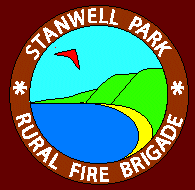 Is your property prepared against bush fires and grass fires? Is your property prepared against bush fires and grass fires?
* Clear ground fuels around the house (long, dry grass, dead leaves and branches, thick undergrowth)
* Reduce Fire Fuels - Take a trip to the tip
* Plant a combination of fire resistant plants on your property
* Clear gutters
* Ember-proof house and sheds
* Join the Static Water Supply (SWS) Marking System
* Ensure roofing is firmly fixed
* Prepare firebreaks (a well watered lawn can act as a firebreak).
* Keep pasture growth down
* Install screens or shutters and enclose underfloor areas if possible
* Screen vents into the roof space with fine wire mesh
* Remove flammable items from around the house (eg. door mats, woodpile, and obvious flammable materials such as paper, boxes, crates, hanging baskets, wooden garden furniture etc)
* Vent LPG gas tanks away from the house
* Compile emergency phone list and leave near phone
 Water Supplies and Fire Fighting Equipment Water Supplies and Fire Fighting Equipment
Things to consider include:
* Check water, taps and hoses. Ensure that hoses with metal fittings are long enough to reach all sides of house when attached to taps.
* Heavy duty hoses with wide-spray nozzles, if possible.
* Reserve water supplies from tank, dam, or swimming pool, if possible, since mains water will be in high demand. Try to store water during winter months.
* Gate valve fitted to water tank (a 38mm Storz coupling will assist the Rural Fire Brigade).
* Have gate valve to fit portable pump as well.
* Regularly check petrol or diesel portable pump, if you have one, to ensure it starts easily.
* Install a sprinkler system in your garden and on roofing, if affordable.
* Gather buckets (preferably metal), mops, spray backpack units, ladders, rakes and shovels in one place for ready access during a fire.
* Battery operated radio and torches in case of electricity failure.
 Evacuation Evacuation
Plan for your personal protection before a fire.
* Decide who's the boss and who goes, who stays.
* Plan for the safety of all family members: special plans should be made for young children, elderly persons, disabled persons and those unable to handle the trauma of bush fire.
* If you plan to evacuate (re-locate):
* If you intend to evacuate (re-locate) any members of the family, plan well ahead of time where to stay, how to make the decision to leave, and how to travel (remember, leave well before the fire front arrives).
* If you intend to stay:
* For those who remain, ensure each person has suitable clothing, including sturdy leather footwear, long pants and a long sleeved shirt or jumper (pure wool or cotton offers the best protection from sparks and embers), a broad brimmed hat, goggles for eye protection, handkerchiefs to tie over nose and mouth, wet towels to drape over neck, and bottles for drinking water.
 What to do when fire approaches What to do when fire approaches
* Listen to the radio for news of the fire's progress, rather than calling emergency services for information.
* Organise and pre-pack.
* Dress in protective clothing, drink water frequently.
* Wet-down roof, house and garden, especially on the side of the approaching fire. Turn on sprinkler system, if you have one.
* Stop downpipes and fill gutters with water.
* Fill baths, sinks and buckets with water for extinguishing small fires and for drinking water.
* Bring in hoses so they don't get burnt.
* As the fire approaches, go inside and remain inside until the fire has passed.
* Place wet towels and blankets against gaps under doors and windows.
* Close heavy curtains, and shutters, if you have them.
* After the fire has passed and for several hours after the fire front has passed, patrol your property and put out spot fires started by flying embers.
* Check roof cavity frequently for spot fires.
More Fire Safety tips can be found on the NSW Rural Fire Service website.
DIAL "000" TO REPORT ALL FIRES
|
|



